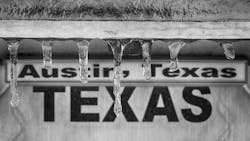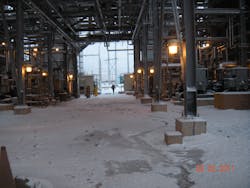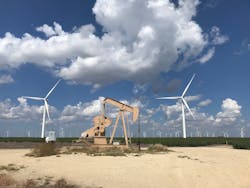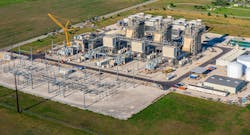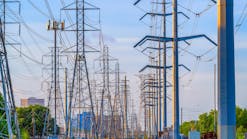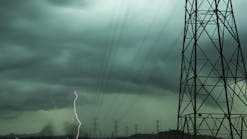Texas’ Big Freeze: The 2021 Power Crisis and the Lessons Learned One Year Later
Texas occupies a unique spot in energy. The nation’s largest energy producer, Texas makes more wind power than any other state and produces more natural gas and oil than any other state. At the same time, Texans consume more energy than residents of any other state in the U.S. — a nation already among the most electricity-hungry in the world.
There is a lot of state pride tied up in being a big player on the energy stage for Texas, so when that system fails, Texas feels the need to save face.
In February 2021, Winter Storm Uri hit North America and nearly 10 million people lost power. The wintry blast hit particularly hard in Texas, where a massive power failure led to water, food and heat shortages.
This was an unprecedented storm in many ways, but it echoes the 2011 Groundhog Day blizzard when rolling blackouts hit three quarters of Texas for several days. In both cases, freezing temperatures triggered a wide-ranging failure of the energy system. Power plants shut down in the cold, natural gas wellheads froze, fuel ran out and the loss of power crippled water and transportation infrastructure.
How has Texas reacted in the year since?
One change was the dismissal of two of the state’s most powerful energy regulators. The Electric Reliability Council of Texas fired its CEO Bill Magness and two days before, the head of the Texas Public Utility Commission DeAnn Walker resigned following a call for change by Lt. Gov. Dan Patrick, who said ERCOT and the PUCT had “hoped for the best instead of planning for the worst.”
Brad Jones, interim president and CEO at ERCOT since May 2021 said Texas’ unique regulatory situation and energy ecosystem make rapid change possible.
“As a state, we were able to quickly mobilize, pass two comprehensive laws and a half-dozen state regulatory proceedings before federal authorities even completed their analysis (the report was issued in November). If we did not have our unique regulatory position, we would have lost nearly an entire year to make much-needed changes,” Jones wrote to T&D World.
For the decades since the Texas grid has been deregulated, Jones said, the emphasis has always been on providing affordable and clean energy, but not as much on reliability. The February storm requires Texas to invest in reliability, Jones said.
Texas can enter the winter of 2022 confident that its fleet of power plants is more prepared than at any time in the past 20 years for winter storms and that all market participants – generators, transmission providers and ERCOT – will ensure that there will not be a repeat of the February 2021 storm, Jones said.
Protecting the Grid
Despite past warnings and reminders by FERC and NERC, that generating units needed to prepare for coming winters, and despite the detailed instructions the agencies sent about winterization, 49 generating units in Southwest Power Pool (15 percent, 1,944 MW of nameplate capacity), 26 in ERCOT (7 percent, 3,675 MW), and three units in Midcontinent Independent System Operator South (four percent, 854 MW), still lacked winterization plans, and 81 percent of the freeze-related generating unit outages occurred at temperatures above the unit’s stated ambient design temperature. Generating units that experienced freeze-related outages above the unit’s stated ambient design temperature represented about 63,000 MW of nameplate capacity.
The team behind the joint report now recommend mandatory reliability standards to require, among other things, for power plant owners to protect cold sensitive equipment; retrofit existing and future units; do annual winterization training; write action plans for freeze-related outages; and account for the effects of climate when providing data.
At a press conference Dec. 8, new PUCT Chairman Peter Lake listed out the changes his commission had made, saying the Texas grid is stronger and more reliable than ever.
ERCOT’s final seasonal assessment of resource adequacy for the 2021-2022 winter said there will be sufficient installed generating capacity to serve forecast peak demand (62,001 MW) assuming “typical winter grid conditions”
Lake said the scenarios run by NERC used to write their report that found that another extreme event like the one that hit in February 2021 would threaten power grid reliability did not account for changes Texas has made to its power grid since Winter Storm Uri.
“It’s hard to understate how much reform we have implemented in such a short amount of time, but when you look at all of that and you look at the realities on the ground in front of us, yes, we can say the lights are going to stay on,” Lake told the press.
Wesley J. Oliphant, Principal and Chief Technical Officer at Exo Group and a veteran of the Texas transmission and utilities market, said there is a problem with basing forecasts on what the weather typically does, however.
“Unfortunately, in my view there is a tendency to forecast the future based on events of the past. All of the wind and ice maps we use are based on historical weather events – statistical mean recurrence intervals of an event reoccurring at some point in the future. Rarely is a potentially more severe weather event taken into consideration,” Oliphant said.
It's a tough sell to ask PUCs and ratepayers to pay to prepare for an event that is, by definition, statistically unlikely to happen, he said, adding that Winter Storm Uri was unprecedented in several ways.
“For Texas, it was unprecedented in both duration and how much of the state was affected at the same time. Temperature wise, several earlier winter storms actually had lower temps, they just didn’t last as long or affect as much of Texas,” Oliphant said.
The weather was underestimated, but how interdependent Texas’ various energy networks, from natural gas infrastructure to power plants to water, were underestimated too, Oliphant said.
“There is little doubt that natural gas issues were a large part of this event in Texas. However, a bigger problem was that there appears to have been a significant ‘sloppiness’ in coordinating and identifying (pre-event) critical natural gas infrastructure that depended on electrical power to operate the wells,” Oliphant said. “With a vocal political outcry for moving towards zero carbon emissions and increasing the renewables portfolios, the delicate interdependency between natural gas and electric power generation is tenuous.”
Changes for Power Plants
At the Dec. 8 press conference, Lake said the PUCT, ERCOT and the natural gas and power generation industries are working together as never before.
“Most importantly, for the first time ever we are requiring winterization for power plants in Texas. This rule was passed over a month ago and it will require power plants to have been winterized by Dec.1, attest to ERCOT that they are winterized and above and beyond that, ERCOT will be conducting inspections to confirm that our power plant fleet is winterized for this winter,” Lake said at the press conference.
Lake said ERCOT would be starting those inspections soon, and referred to Jones, to address that process.
“In fact, those weatherization processes have already begun. On December 1 we received attestations from CEOs of generators and transmission service providers throughout the industry, throughout Texas that attested to us that they were prepared for the winter,” Jones said.
Over 300 generating units from more than 21 owners will be inspected. Those generating units represent about 85% of the lost megawatt hours during Winter Storm Uri, Jones said. At the time of the press conference, Jones also said two transmission service providers had also been inspected, and of the roughly 54 transmission companies ERCOT expected to receive attestations from, it received 100% of those.
The PUC increased penalties for violations of winterization standards to up to $1 million per day, per incident, Lake said. The majority of Texas’ generator fleet have been “proactive” in winterizing, Lake said, adding that those who were not will be punished swiftly and heavily.
Texas’ new rules for weatherization are based on a generator best practices report from Quanta Technology first submitted in 2012, and transmission best practices recommended in 2011 by FERC and NERC. The latter was prepared following the Groundhog Day event of February 2011.
“We go into this winter knowing that because of all these efforts, the lights will stay on,” Lake said at the press conference. “No other power grid has made as remarkable changes in such a short amount of time as we have, and we will continue to improve our grid and our market.”
Writing to T&D World, Jones said nearly all the generators operating in Texas realized points of failure due to the February storm.
“They began immediately to have their teams identify the steps they needed to complete to be better prepared for the next winter. I know that tens of millions of dollars were invested by just three generators to winterize their equipment for the winter of 2022. They began this work BEFORE there was any type of regulatory framework laid out; they did it because they knew there could not be a repeat of February 2021,” Jones wrote.
Robert Kondziolka, Governing Body Member for the Western Energy Imbalance Market, former transmission director with the Salt River Project and former engineer for Tucson Electric Power, said after the 2011 cold weather event that disrupted the ERCOT, WECC, MISO and SERC regions, WECC led an effort in the Western Interconnection to address all the recommendations from the FERC-NERC report.
“WECC tracked the progress by each entity in getting the recommendations implemented. At the state level, the Arizona Corporation Commission required improvements by the natural gas supplier to prevent low pressure to residential users should another similar event occur,” Kondziolka said.
El Paso Electric, which lies outside ERCOT, is an example of how progress was made well before the 2021 freeze, Kondziolka said. After seeing what cold weather could do to power plants, El Paso Electric made the recommended improvements to their local gas fired generation fleet so they would be reliable during another extreme cold weather event. During the 2021 event their local generators operated reliably, and they did not need to implement load curtailments to meet their system demand, Kondziolka said.
“It does appear to me that both the Texas PUC and ERCOT are at least saying the right things,” Oliphant said, but cautioned that major improvements will not happen overnight and must address a wide-ranging, complicated set of problems.
“The wires side I think has a good embrace of [resiliency culture] already, but the generation side, at least here in Texas, has lacked market or other incentives to promote that type of culture. And doing so because it is the right thing to do just may not work,” Oliphant said.
Interconnections
As the news covered the aftermath of Winter Storm Uri and words like “ERCOT” and “interconnection” started being used by laypeople around the country, the links between the Texas power grid and other regional grids got talked about quite a bit. The map of the North American grid interconnections, to people who have never seen it and do not know the history, does look a little odd with the Western Interconnection covering half the continent, the Eastern Interconnection covering the other half, and then that strange Texas-shaped chunk taken out of the middle.
ERCOT operates as a functionally separate interconnection, although it has four asynchronous ties with other interconnections: Two direct current (DC) transmission tie lines between ERCOT and the Eastern Interconnection through SPP: the North Tie, and the East Tie. There is also a pair of ties between ERCOT and Mexico. ERCOT does not have any synchronous connections to the Eastern Interconnection, Western Interconnection, or Mexican grid.
ERCOT’s counterparts to the north and northeast, the Southwest Power Pool and the Midcontinent ISO, have strong networks of transmission tie-ins at different voltage levels.
In FERC and NERC’s recommendations, the agencies write ERCOT “should conduct a study to evaluate the benefits of additional links between the ERCOT Interconnection and other interconnections that could provide additional reliability benefits,” which include increased ability to import power when its system is stressed during emergencies and improved black start capabilities. The agencies encouraged ERCOT to perform these studies as soon as possible.
The recommendation suggests the possibility that, in a similar event, ERCOT may not be able to facilitate a re-start of the grid given the combined unavailability of black start and natural gas-fired generating units. Having access to additional imports could be critical, according to FERC and NERC, if ERCOT experienced a blackout and had multiple black start generating units outaged, as was the case during the February 2021.
When asked about the reliability benefits of further interconnections, Jones said the February 2021 storm was so severe and wide-ranging that more interconnections would not have helped.
“ERCOT would not have benefitted from interconnecting further with other grids and the facts, as outlined in the Federal Energy Regulatory Commission (FERC) and our own data, back that up. FERC identified that the grids closest to ERCOT did not have power to send to Texas during the February winter storm. Our own data, from imports at our DC ties, show that as the storm worsened, imports were cut. Additional interconnection would not have helped because there was no power to send,” Jones wrote to T&D World.
Jones added that more interconnections could cost millions if not billions of dollars, and that money would be better spent on ERCOT’s own infrastructure to achieve reliability results higher than what could be had from an interconnection.
In one example, Jones said Texas’ Rio Grande Valley contains several stranded generation assets that could help serve the rest of the state if transmission congestion issues were addressed.
“Improving service to the lower Rio Grande Valley has been a key initiative for ERCOT. At its core, the transmission constraints represent unfair service levels to the people and businesses in the Rio Grande Valley. At a higher level, those constraints create grid management challenges that shouldn’t exist for ERCOT. The PUC last week gave the approval to begin the multi-year process to resolve those constraints,” Jones said.
Kondziolka said that while he lacks the perspective of ERCOT’s system operators, FERC and NERC are right to suggest a look at interconnection benefits.
“If ERCOT had better interconnections with adjacent regions they likely never get to the low point they did,” Kondziolka said. “When they initially started losing generators, they could have relied on emergency assistance from adjacent regions (prior to energy being as scarce as it got). This may have provided time for ERCOT to figure out why they were inadvertently dropping circuits that provided service to generators and prevented them from operating.”
Doing this would allow more natural gas to stay or get into the system, help moderate prices and increase gas generation availability outside of Texas. This, in turn, would provide for more energy assistance across North America.
“It doesn’t necessarily decease load but could provide time to help implement conservation measures. The only way you would know if increased interconnections would help is to start the analysis at the beginning or just prior to the event and model those conditions and work through it step-by-step. A lifeline at the beginning when needs are small provides much more value than a lifeline when needs are big,” Kondziolka said.
More Winters are Coming
“The devastating effects of extreme cold on our bulk power system’s ability to operate in 2011 and now, 2021, must not be allowed to happen again. We have a duty to protect the bulk power system and public safety and we will do just that,” Rich Glick, Biden’s chairman of FERC said in his commission’s final report on the February 2021 freeze.
FERC and NERC’s joint recommendations found that protecting just four types of power plant components from icing and freezing could have reduced outages by 67% in the ERCOT region, 47% in the SPP and 55% in the MISO South regions.
The failure of the Texas grid had mostly to do with power plants and the natural gas infrastructure that feeds plants and heats homes both freezing. 81% of the generating units that went offline did so at temperatures above the units’ stated temperature limits. Of the power plant outages that happened because of an interruption in fuel supply, 87% of these were at natural gas-fired power plants.
According to NERC, this was the largest firm load shed event in U.S. history, at 23,418 MW, and the third largest in quantity of outaged megawatts of load, with only the August 2003 and August 1996 blackouts being worse.
The two agencies and their partner organizations said Texas is locked in a “recurring pattern for the last ten years” where extreme weather makes power plants unable to produce power, leading to a power crisis.

